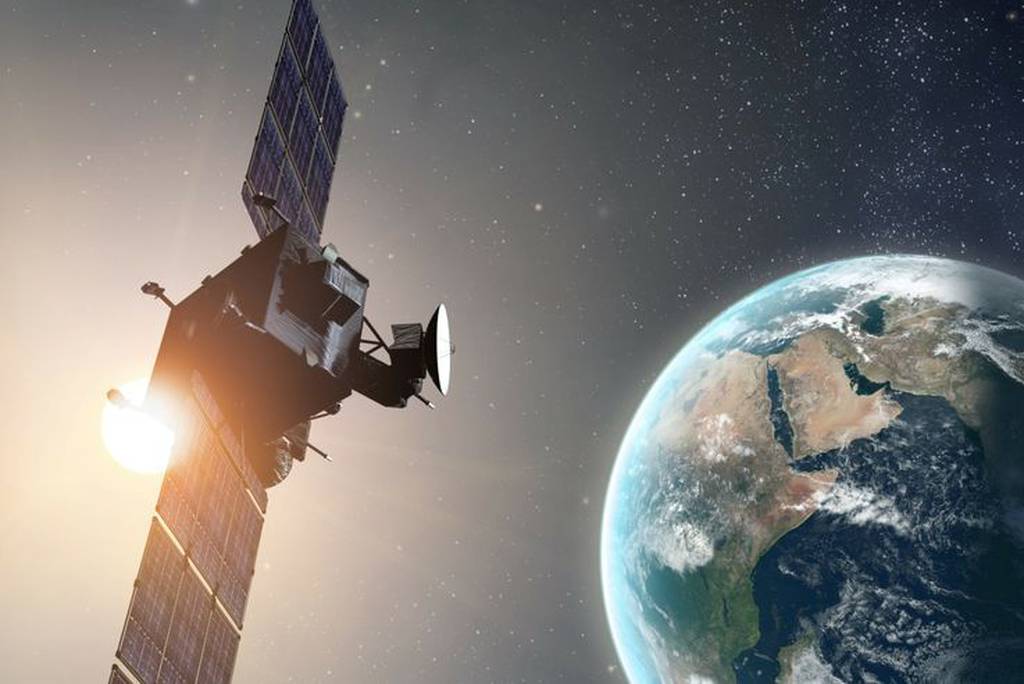
The Space Force’s acquisition shop has been bullish about its pursuit of fixed-price development contracts amid rising concern from defense companies that the approach puts too much risk on industry.
Space acquisition chief Frank Calvelli said today that while he stands by the fixed-price construct for much of the Space Force’s portfolio, there are some programs that require a more nuanced approach.
“I haven’t said I’m going to build the next-generation Battlestar Galactica, that’s never been built before, fixed-price,” Calvelli said at a Feb. 23 Center for Strategic and International Studies event. “We look at each acquisition individually and then we try to marry up the best strategy. When we’re doing smaller footprint systems using existing technology, fixed price works fine.”
Under fixed-price contracts, companies are responsible to cover any unexpected costs incurred during a development program. The deals are designed to reduce risk to the government, but can cause problems for industry when challenges arise.
One well-known example of this is Boeing’s development of the KC-46 tanker. The Air Force awarded the company a $4.9 billion fixed-price contract for the effort in 2011, but the company has racked up $7 billion in cost overages due to design and production issues.
In a series of earnings calls in late January, several large defense firms said they were concerned about the Defense Department’s use of fixed-price contracts. Lockheed Martin CEO Jim Taiclet said the deals lead companies to “take tremendous risk on cost and pricing.”
Northrop Grumman’s top executive, Kathy Warden, said the company has passed on high-profile defense programs due to that risk, and Chris Calio — chief operating officer at RTX and the company’s soon-to-be CEO — expressed similar sentiments.
Since Calvelli took the lead of the Space Force acquisition office in 2022, he has issued multiple memos highlighting acquisition practices that can drive speed into development programs. His vision is for the service to buy smaller systems that rely on existing technology under fixed-price contracts that push for a program to be fielded within three years of an initial award.
“When you’re using fixed price, you’re not doing the first-of-its-kind or inventing something new,” he said. “And so, I’m a little bit confused by some of the bigger primes who say they’re against that. They should not be against that.”
Calvelli acknowledged that not all programs fit that mold. He offered as an example the Space Force’s Evolved Strategic Satellite Communications program, which will provide secure, survivable communications capabilities for strategic missions. The satellites carry complex requirements and are designed to withstand a nuclear attack.
Boeing and Northrop Grumman have been developing prototype satellites since 2020 and the service expects to choose a single provider and begin production in 2025. Calvelli said that because the program was conducting early design and prototype work, the service considered a fixed-price contract as part of its acquisition strategy. However, it appears a cost-plus deal, which covers a company’s expenses as well as some profit, may be a better fit.
“Had we built a real payload or actually built the prototype of a satellite, then maybe it’s time to go off and do something fixed price,” he said. “As we revise the [acquisition strategy,] we are looking at going more towards the traditional cost-plus model.”
Courtney Albon is C4ISRNET’s space and emerging technology reporter. She has covered the U.S. military since 2012, with a focus on the Air Force and Space Force. She has reported on some of the Defense Department’s most significant acquisition, budget and policy challenges.
- SEO Powered Content & PR Distribution. Get Amplified Today.
- PlatoData.Network Vertical Generative Ai. Empower Yourself. Access Here.
- PlatoAiStream. Web3 Intelligence. Knowledge Amplified. Access Here.
- PlatoESG. Carbon, CleanTech, Energy, Environment, Solar, Waste Management. Access Here.
- PlatoHealth. Biotech and Clinical Trials Intelligence. Access Here.
- Source: https://www.defensenews.com/battlefield-tech/space/2024/02/23/space-forces-fixed-price-push-includes-some-exceptions-calvelli-says/



